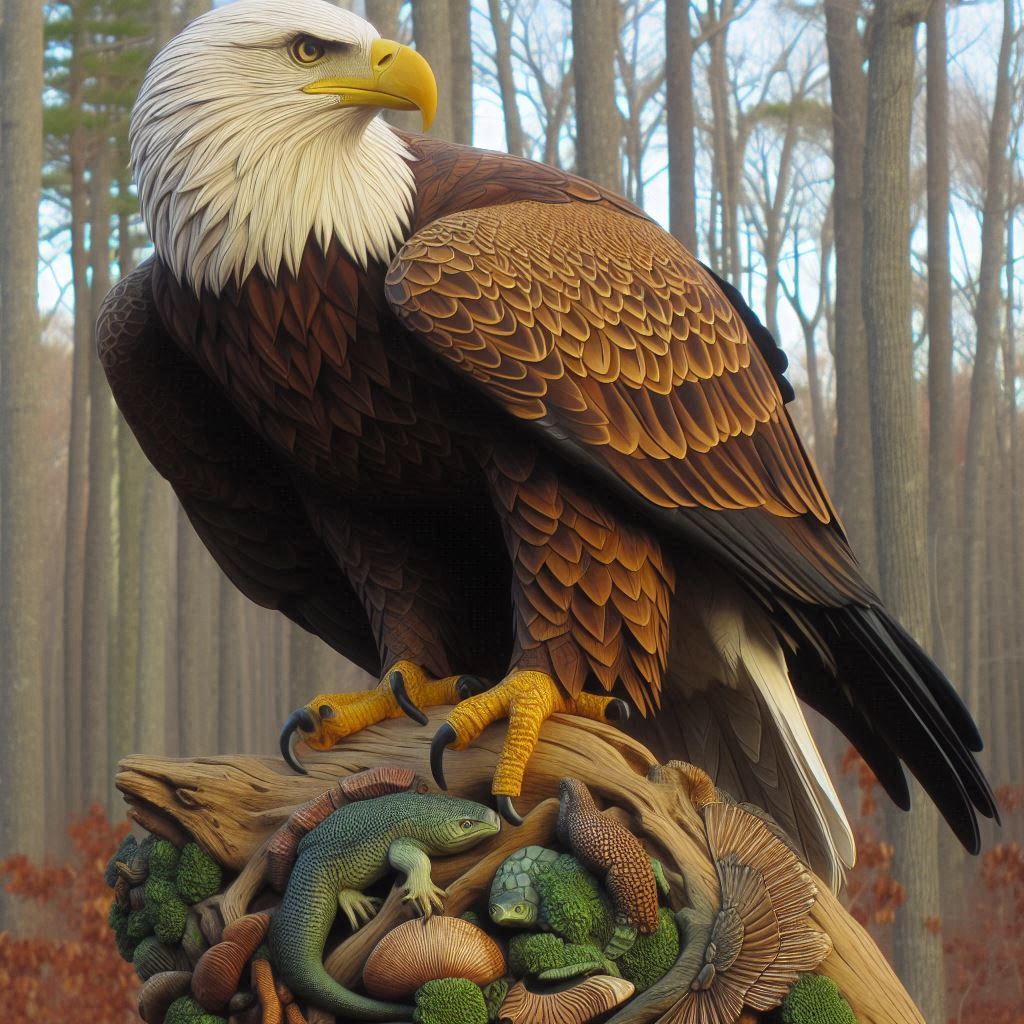Introduction
The majestic Hancock bird, often associated with the grandeur of eagles, symbolizes strength, freedom, and a deep connection to nature. These magnificent birds, particularly the bald eagle (Haliaeetus leucocephalus) and golden eagle (Aquila chrysaetos), have captured the fascination of people worldwide, serving as powerful emblems in various cultures. However, as human activities continue to encroach on their habitats, the need for effective conservation efforts and educational initiatives has become increasingly vital. This article delves into the significance of Hancock birds, the challenges they face, and the critical role of conservation and education in ensuring their survival.
Understanding Hancock Birds: The Eagles
Eagles belong to the family Accipitrid and are known for their keen eyesight, powerful build, and soaring flight. The term “Hancock bird” typically refers to species such as the bald eagle and the golden eagle.
Bald Eagle
The bald eagle, the national bird of the United States, is renowned for its striking white head and tail contrasted with a dark brown body. Found near large bodies of open water, these birds primarily feed on fish, using their impressive hunting skills to swoop down and capture their prey with powerful talons.
Characteristics of the Bald Eagle
- Size: Adult bald eagles can have a wingspan of 6 to 8 feet and weigh between 3 to 6.3 kg (6.6 to 14 lbs).
- Coloration: Their distinctive coloration begins to develop at around 4 to 5 years, when they transition from a mottled brown to the iconic white head and tail.
- Vision: Bald eagles possess extraordinary eyesight, allowing them to spot prey from a mile away. They have about four times the visual acuity of humans, aiding them in hunting.
- Vocalization: The call of a bald eagle is a series of high-pitched whistling or piping notes, which can be mistaken for a weak sound due to their smaller size compared to other birds.
Golden Eagle
The golden eagle, recognized for its dark plumage and golden-brown feathers on its neck, is one of the largest and most powerful birds of prey. Known for their remarkable agility and strength, golden eagles are formidable hunters, often preying on small to medium-sized mammals.
Characteristics of the Golden Eagle
- Size: Golden eagles are similar in size to bald eagles, with a wingspan that ranges from 6 to 7.5 feet and weights between 3.6 to 6.3 kg (8 to 14 lbs).
- Hunting Skills: Golden eagles are known for their incredible speed and agility during flight. They can dive at speeds of over 150 miles per hour when hunting.
- Social Behaviour: Unlike bald eagles, which often prefer solitary living or living in pairs, golden eagles can form larger groups, especially during migration.
- Adaptability: Golden eagles are highly adaptable and can thrive in diverse habitats, including mountains, forests, and open plains.
Generations of Eagles: Life Cycle and Development
Eagles experience a fascinating life cycle characterized by various stages of development and unique behaviours.
Nesting and Breeding
Eagles are monogamous and typically mate for life. They usually return to the same nesting site year after year. The nesting process involves several steps:
- Courtship: During the breeding season, eagles engage in aerial displays, including soaring and diving, to strengthen their bond. These displays can involve synchronized flying and elaborate manoeuvres.
- Nest Construction: Eagles build large nests made of sticks and other materials, often located in tall trees or on cliffs. The nests can reach several feet in diameter and are reused and expanded each year. Nest sites are usually chosen based on accessibility to food and safety from predators.
- Egg Laying: Female eagles typically lay 1 to 3 eggs per breeding season. The eggs are incubated for about 35 days, with both parents sharing incubation duties. The eggs are usually laid several days apart, resulting in a staggered hatching period.
- Hatching and Chick Development: Once hatched, eaglets are dependent on their parents for food and protection. Initially, they are covered in down feathers and have their eyes closed. As they grow, they develop feathers and begin to exercise their wings.
Fledging
Eagles fledge, or leave the nest, at around 10 to 12 weeks of age. Fledging is a critical period during which young eagles learn to fly and hunt. Parental care continues for several weeks post-fledging, as the young birds refine their hunting skills. The transition from nest to flight is marked by several phases:
- Wing Exercises: Eaglets practice flapping their wings and hopping around the nest to build strength.
- First Flights: Initial flights are usually short and low to the ground as eaglets gain confidence and skill.
- Learning to Hunt: After fledging, young eagles rely on their parents for food while they learn to hunt independently.
Maturity and Lifespan
Eagles reach sexual maturity between 4 to 6 years of age. In the wild, they can live for 20 to 30 years, although some individuals have been known to live longer in captivity.
- Physical Changes: As they mature, eagles undergo changes in plumage and size, with adult birds becoming larger and more robust than juveniles.
- Migration Patterns: Many eagle species exhibit migratory behaviour, traveling long distances in search of food or suitable breeding grounds.
The Risks to Eagles’ Lives

Despite their incredible adaptations, eagles face numerous risks throughout their lives. These threats significantly impact their populations and conservation status.
Habitat Loss
One of the most pressing challenges facing Hancock birds is habitat loss. Urbanization, agriculture, and deforestation have led to the destruction of nesting sites and hunting grounds. As natural habitats are converted into urban landscapes, these birds find it increasingly difficult to thrive.
- Example: In the U.S., coastal development has significantly reduced the availability of suitable nesting and feeding sites for bald eagles. Urban encroachment often leads to a fragmentation of habitats, making it challenging for eagles to find food and secure nesting sites.
Climate Change
Climate change poses an additional threat, altering the ecosystems on which these birds depend. Changes in temperature and precipitation patterns can affect food availability and nesting success.
- Impact: For instance, the melting of ice in northern regions affects fish populations, directly impacting the bald eagle’s primary food source. Additionally, extreme weather events can lead to nest destruction and decreased reproductive success.
Human Disturbance
Human activities can lead to direct disturbances, particularly during nesting season. Eagles are sensitive to noise and activity, and human encroachment can result in nest abandonment.
- Example: Increased recreational activities near nesting sites can disrupt breeding, leading to decreased reproductive success. Disturbances from construction, boating, and other human activities can create stress for nesting eagles, leading to lower hatching rates.
Pollution
Pollution, especially from pesticides and heavy metals, has detrimental effects on eagle populations. Chemicals can accumulate in the food chain, leading to reproductive failures and weakened immune systems.
- Case Study: The infamous case of DDT (dichloro-diphenyl-trichloroethane) in the mid-20th century nearly wiped out bald eagles in the U.S. due to eggshell thinning. Despite the ban on DDT, other pollutants continue to threaten eagle populations, necessitating ongoing monitoring and regulation.
Hunting and Poaching
Illegal hunting and poaching are significant threats to eagle populations. Despite legal protections, some individuals still view eagles as threats to livestock or as trophies.
- Statistics: In certain regions, poaching has been reported as a factor in population declines, particularly for golden eagles. The illegal trade of eagle feathers and other body parts can also have detrimental effects on local populations.
Lead Poisoning
Lead poisoning from ingesting spent lead ammunition is a critical risk for eagles. As scavengers, eagles can ingest lead fragments while feeding on carrion.
- Research Findings: Studies have shown that lead exposure can result in severe health issues, including neurological impairment and death. The introduction of non-lead ammunition has been advocated as a means to mitigate this risk.
The Importance of Conservation Efforts
Given the myriad challenges facing Hancock birds, robust conservation initiatives are essential for their survival. Various organizations and government agencies have implemented programs aimed at protecting these magnificent creatures and their habitats.
Habitat Restoration
One of the most effective strategies for eagle conservation is habitat restoration. Efforts to restore wetlands, rivers, and forests can help ensure that these birds have access to the resources they need to survive. Organizations often work in collaboration with local communities, emphasizing the importance of maintaining a healthy environment for both wildlife and people.
- Case Study: Organizations such as The Nature Conservancy focus on restoring habitats critical for eagle populations, emphasizing the restoration of wetlands and riparian areas. These restoration efforts not only benefit eagles but also improve overall ecosystem health.
Legal Protections
Legal protections have been instrumental in the recovery of eagle populations. In the United States, the bald eagle was listed as an endangered species in 1978 under the Endangered Species Act. Thanks to concerted conservation efforts, the bald eagle was removed from the endangered species list in 2007. Similar protections are in place for the golden eagle in several regions, restricting hunting and protecting nesting sites.
- Example: The Migratory Bird Treaty Act provides legal protections for migratory birds, including eagles, across North America. Enforcement of these laws is crucial for the preservation of eagle populations.
Education and Outreach
Education plays a vital role in eagle conservation. Raising public awareness about the importance of eagles and their habitats can foster a culture of conservation. Educational programs, workshops, and community events can engage the public and encourage stewardship of local ecosystems.
- Community Involvement: Many conservation organizations conduct educational programs aimed at schools and communities, highlighting the significance of eagles and the role individuals can play in protecting them. Engaging young people in conservation efforts can create a generation of advocates for wildlife preservation.
Research and Monitoring
Ongoing research is crucial for understanding eagle populations and their needs. By studying the behaviours, health, and migratory patterns of eagles, conservationists can develop targeted strategies to protect them.
- Tracking Technologies: The use of satellite tracking and GPS technology has revolutionized the study of eagle migration patterns. Researchers can now monitor eagle movements in real time, providing valuable data for conservation planning.
The Role of Technology in Eagle Conservation
Advancements in technology have significantly enhanced conservation efforts for Hancock birds. Innovative tools and approaches are being used to monitor populations, restore habitats, and engage the public in conservation initiatives.
Satellite Tracking
Satellite tracking devices have been instrumental in understanding the migratory patterns and habitat use of eagles. These devices allow researchers to gather data on the movement of individual birds, providing insights into their behaviour and habitat preferences.
- Impact: By analysing tracking data, conservationists can identify critical habitats and migratory routes, informing conservation strategies. This information is vital for planning habitat restoration projects and ensuring that eagles have access to necessary resources.
Drones in Habitat Monitoring
Drones have emerged as a valuable tool for monitoring eagle habitats. Equipped with high-resolution cameras, drones can assess habitat conditions, track nesting sites, and identify potential threats to eagle populations.
- Example: Conservation organizations are using drones to conduct aerial surveys of nesting sites, allowing for non-invasive monitoring of eagle populations. This technology reduces the need for ground-based observations, minimizing disturbance to nesting birds.
Citizen Science Initiatives
Citizen science initiatives engage the public in data collection and monitoring efforts. These programs encourage individuals to report eagle sightings, nesting activity, and environmental changes, contributing valuable information to researchers.
- Community Engagement: Citizen science not only provides essential data for conservation but also fosters a sense of ownership and connection to local wildlife. By involving the community, organizations can build a network of advocates for eagle conservation.
Also Read: The Existence of Atila Altaunbay: An Experience of Fondness and Difficulties
Conclusion
The Hancock bird, particularly the eagle, embodies the beauty and resilience of nature. However, the challenges they face in the modern world underscore the urgent need for effective conservation and educational initiatives. Habitat loss, climate change, pollution, and human disturbances threaten their populations, highlighting the importance of robust conservation efforts.
Through habitat restoration, legal protections, public education, and innovative technology, we can work collectively to ensure the survival of these magnificent birds. The journey of eagle conservation exemplifies the power of collaboration, education, and technological innovation in safeguarding our planet’s natural heritage. By protecting eagles, we are also safeguarding the intricate ecosystems they inhabit, ensuring that future generations can admire the grace and majesty of the Hancock bird.
FAQs About the “Hancock Bird”
1. What is the Hancock bird, and why is it significant?
Answer: The term “Hancock bird” often refers to eagles, particularly the bald eagle and golden eagle. These birds are significant symbols of strength, freedom, and natural beauty, playing vital roles in their ecosystems as top predators.
2. What are the main threats facing eagles today?
Answer: Eagles face several threats, including habitat loss due to urbanization and agriculture, climate change, pollution (especially from pesticides), hunting and poaching, human disturbance, and lead poisoning from ingested ammunition.
3. How do eagles typically reproduce and raise their young?
Answer: Eagles are monogamous and usually mate for life. They build large nests, lay 1 to 3 eggs, and both parents share incubation duties. The chicks are dependent on their parents for food and protection until they fledge, usually at around 10 to 12 weeks.
4. What conservation efforts are in place to protect eagles?
Answer: Conservation efforts include habitat restoration, legal protections under acts like the Endangered Species Act, public education campaigns, research and monitoring programs, and community involvement initiatives.
5. How can I get involved in eagle conservation efforts?
Answer: You can get involved by volunteering with local conservation organizations, participating in citizen science initiatives, attending educational workshops, and spreading awareness about the importance of eagle conservation in your community.
6. What role do eagles play in their ecosystems?
Answer: As top predators, eagles help regulate populations of prey species, contributing to the balance of their ecosystems. They also serve as indicators of environmental health, reflecting the condition of their habitats.
7. Are there specific programs for educating the public about eagle conservation?
Answer: Yes, many organizations offer educational programs for schools and communities that focus on the importance of eagles, their habitats, and the steps individuals can take to protect them. These programs often include workshops, guided nature walks, and informational resources.
8. How has technology impacted eagle conservation?
Answer: Technology, such as satellite tracking and drone surveys, has enhanced monitoring and research efforts for eagle populations. Citizen science initiatives that involve public data collection also play a significant role in gathering information about eagle behaviors and habitats.
9. What is the lifespan of eagles in the wild?
Answer: Eagles can live for 20 to 30 years in the wild, although some individuals may live longer in captivity. Their lifespan varies based on factors like environmental conditions and threats faced during their lives.
10. What can individuals do to minimize the risks eagles face?
Answer: Individuals can minimize risks by properly disposing of lead ammunition, reducing pollution, protecting natural habitats, reporting illegal hunting activities, and advocating for conservation policies at local and national levels.
Stay in the loop for upcoming updates and alerts! Techveezy






